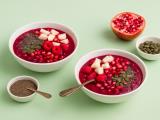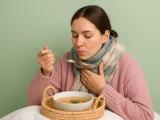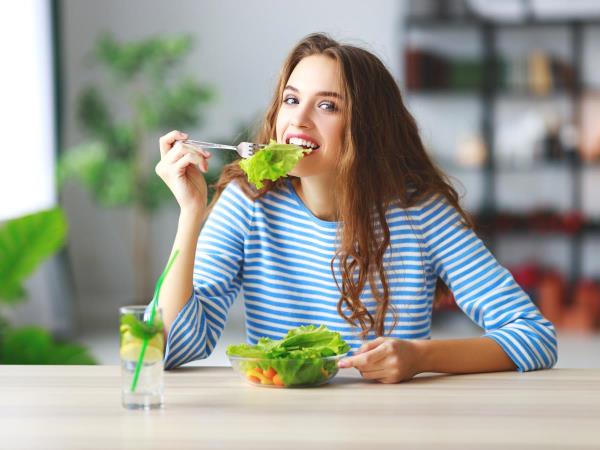According to the World Health Organization (WHO), 25% of the global population faces iron deficiency, the highest among all nutritional deficiencies. Among women of reproductive age, 30 to 40% are affected, most commonly due to heavy menstruation. In men, it is less common, but still significant, especially for those following a vegan or one-sided diet.
How much iron do we actually need?
According to official recommendations:
- Women need 15 mg of iron per day,
- Men need 10 mg.
However, these are not numbers you should memorize, it is more important to know how to get this iron into your body, and even more, to ensure that your body actually absorbs it.
Two types of iron: one the body recognizes quickly, the other hardly notices
Now, a crucial trick known by grannies. There are two types of iron in food:
- Heme iron (from meat, fish, and eggs),
- Non-heme iron (from plant-based foods like beans, vegetables, fruits).
The body can absorb heme iron much more easily - about 15 to 30% of what is consumed. With non-heme iron, the picture is quite modest - only 2 to 10% ends up in the blood, the rest being excreted by the body. But don't worry - there are tricks to increase its absorption.
Old folk advice: iron gets absorbed when combined with vitamin C
If you consume vitamin C with your meal, your body will better utilize non-heme iron as well. So, always have on your table:
- a slice of lemon in water,
- some bell pepper in salad,
- or tomato puree with lentils.
This is not just a theory - a study published in the American Journal of Clinical Nutrition showed that just 50 mg of vitamin C (found in a medium-sized kiwi) can double the absorption of iron from plant-based foods. So - it's not only about what you eat but also about what you combine it with.
What did our grandparents eat?
In rural areas, for what was once called anaemia (referring to iron deficiency), it was often said: Give him some liver, and he'll immediately have rosy cheeks. Indeed, liver contains more iron than nearly any other food. In 100 grams of calf liver, there are as much as 18 mg of iron - more than the daily requirement of an adult woman!
Grandmothers also used to cook beef bone broth - not only is this broth rich in minerals, but it also contains some iron, warming and invigorating us. It is particularly useful in the summer when we lose electrolytes through sweating, and iron is one of the first minerals to leave the body through the skin.
What can we do today?
In summer, there is an abundance of iron-rich foods. And the best part is - these are dishes you probably already have at home:
- Grilled chicken with boiled Swiss chard (Swiss chard is not only rich in iron but also contains folates that aid blood production),
- A sandwich with whole grain bread, tofu slices, and some tomato,
- Salad with cooked beans, roasted bell pepper, and lemon dressing.
- For dessert, try dried apricots (around 6 mg of iron per 100g), paired with some walnuts to facilitate iron transfer in the body.
Fish and shellfish - gifts from the sea full of iron
If you are by the sea, do not overlook shellfish, sardines, or tuna - sardines in oil contain about 2.9 mg of iron per 100 g, while shellfish can contain up to 28 mg of iron per 100 g! This is a natural energy capsule that will not only enhance your dinner but also help with improved focus and well-being.
Watermelon and figs - summer fruits for strong blood
It may sound unbelievable, but even watermelon, the queen of summer picnics, contains some iron. Indeed, a small amount - around 0.4 mg per 100 g - but when you eat several slices, it adds up. Additionally, watermelon contains vitamin C, which further enhances the absorption of iron from other foods. Figs, on the other hand, have 2.3 mg of iron per 100 g. And this is fresh, natural, without cooking or preserving.
What about plant-based secrets?
People who do not eat meat often turn to lentils, chickpeas, peas, beans, and dark leafy greens. Another treasure trove of iron is molasses - a thick, dark syrup that is a byproduct of sugar production. One tablespoon of molasses contains as much as 3.5 mg of iron, along with calcium, magnesium, and potassium. This was once a homemade morning remedy, mixed in warm water or milk.
Do dietary supplements help?
If you opt for iron in tablet form, be cautious - many supplements can cause constipation and other digestive issues. Therefore, it is always better to start with food, and supplements should be a secondary option. In any case, it is advisable to consult a doctor before taking them and check your blood levels - especially hemoglobin (an indicator of oxygen transport in the blood) and ferritin (stored iron in the body).
Research recommendations
According to the European Food Safety Authority (EFSA), the average iron intake for adults in Europe is around 10-14 mg per day, which is often insufficient - especially in women. Studies from the UK and Sweden show that 2 out of 5 women of reproductive age have low iron stores, without even being aware of it.
Common symptoms that people do not associate with iron deficiency include:
- cold hands and feet,
- irritability,
- frequent dizziness,
- pale skin and mucous membranes (e.g., inner eyelids),
- or even chewing ice (a rare but interesting habit some develop due to severe iron deficiency - known as pagophagia).
Summer is not only a time for relaxation but also an ideal opportunity to give your body something it often lacks - iron. You don't need expensive supplements and specialized diets, just a few thoughtful meals a week. Maybe a Swiss chard sandwich, a bowl of lentils, or a plate of shellfish. Your blood will thank you - and so will your well-being.









 Would you like to be informed about news on the website?
Would you like to be informed about news on the website?

